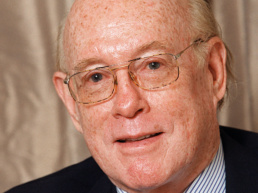The pandemic has made even more evident the need to communicate science in a clear, perceptible, and capable way of reaching all audiences. In the last two years, the media has had a constant presence of scientists from various fields and, with them, a unique opportunity for Science Communication. This week’s guest devotes some of her time to trying to improve the way scientists communicate. Joana Lobo Antunes is a scientist, university professor and science communicator.
She holds a bachelor’s degree in Pharmaceutical Sciences and a PhD in Organic Chemistry. She is a professor of Communication of Science at Universidade Nova de Lisboa and Coordinator of the Area of Communication, Image and Marketing of the Instituto Superior Técnico. She is linked to many scientific dissemination projects such as “90 Seconds of Science”, Antena 1 program, since 2016.
In the last two years, television, radio, and newspapers have had as a presence, practically daily, scientists from various fields to explain to the world, eager for answers, how we would deal with the pandemic. Often, more than explaining what they knew, scientists had to communicate that uncertainty and the lack of answers are part of the scientific process itself, a unique opportunity that Joana Lobo Antunes believes has not been fully exploited.
“What we have tried to explain is what science is, how science is done, for people to perceive our constraints, so that when we say ‘we don’t know yet’ it is not a question of ignorance, but a matter of process. And I’m not sure we’ve been completely successful in doing that.”
The false or contradictory information that fueled the anti-vaccine and even anti-science movements also benefited from the lack of prominence of scientists in traditional media, argues the scientist.
“Science passes in a very discreet way in the media and, essentially, in the written press. Scientists have never been great protagonists. (…) As long as there is no widespread media interest in these issues (…), the opinion of scientists in the forums with greater visibility does not actually reach so many sides.”
In addition to the need for this space, scientists also need to better communicate what they do, so that journalists and, consequently, the general public can better understand messages. Joana Lobo Antunes believes that, for this, there must be a greater investment in science and, in particular, in its dissemination.
“We have to work in anticipation and hence the importance of having strong science communication programs, a very strong investment in science and also in its dissemination, because if scientists are the first to put history out here and explain how things are, instead of coming to disprove them, their message is much stronger.”
The scientist and communicator also talks about her stint at the Alan Alda Center for Communicating Scienceat Stony Brook University in New York, which develops university programs on Science Communication. She found many similarities with the method already applied in the courses developed at Universidade Nova, which brings together journalists, actors, and theatrical representation to help scientists communicate better, but highlights a fundamental difference.
“In USA there is a tradition of doing this [Comunicação de Ciência]much longer than ours (…) The advantage in the U.S. is that they’ve been doing this for a lot longer, they have a lot more initiatives, a lot more money, and they have a lot more investment in this area.”
Don’t miss this episode, already available on the platforms where you normally listen to your podcasts. You can also find this episode in the links below.
Related Posts
March 25, 2025
Note of Condolence – Charles Buchanan (1934-2025)
March 24, 2025
Applications Open: FLAD/Saab Visiting Professor at UMass Lowell 2026
Portuguese professors can apply to…
March 17, 2025
FCT and FLAD sign new protocols with the University of California
The objective is to promote academic…


